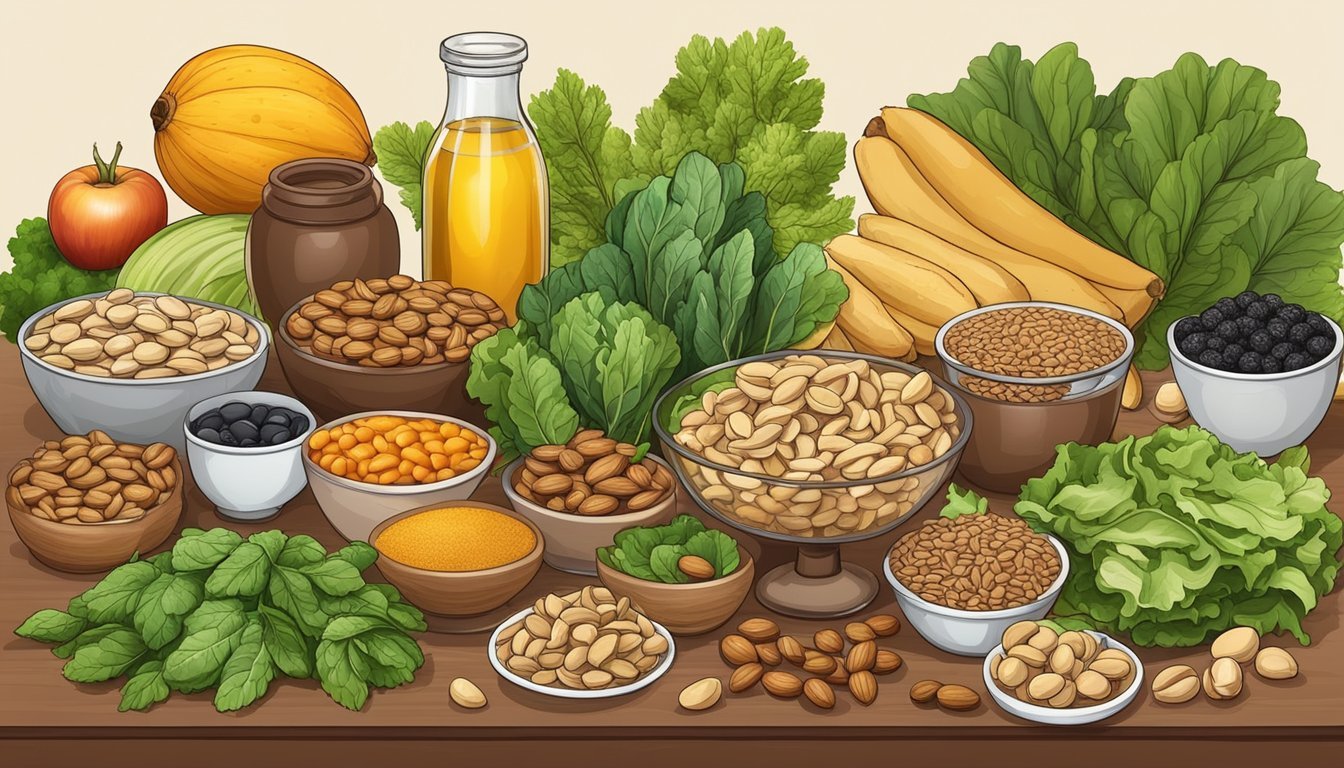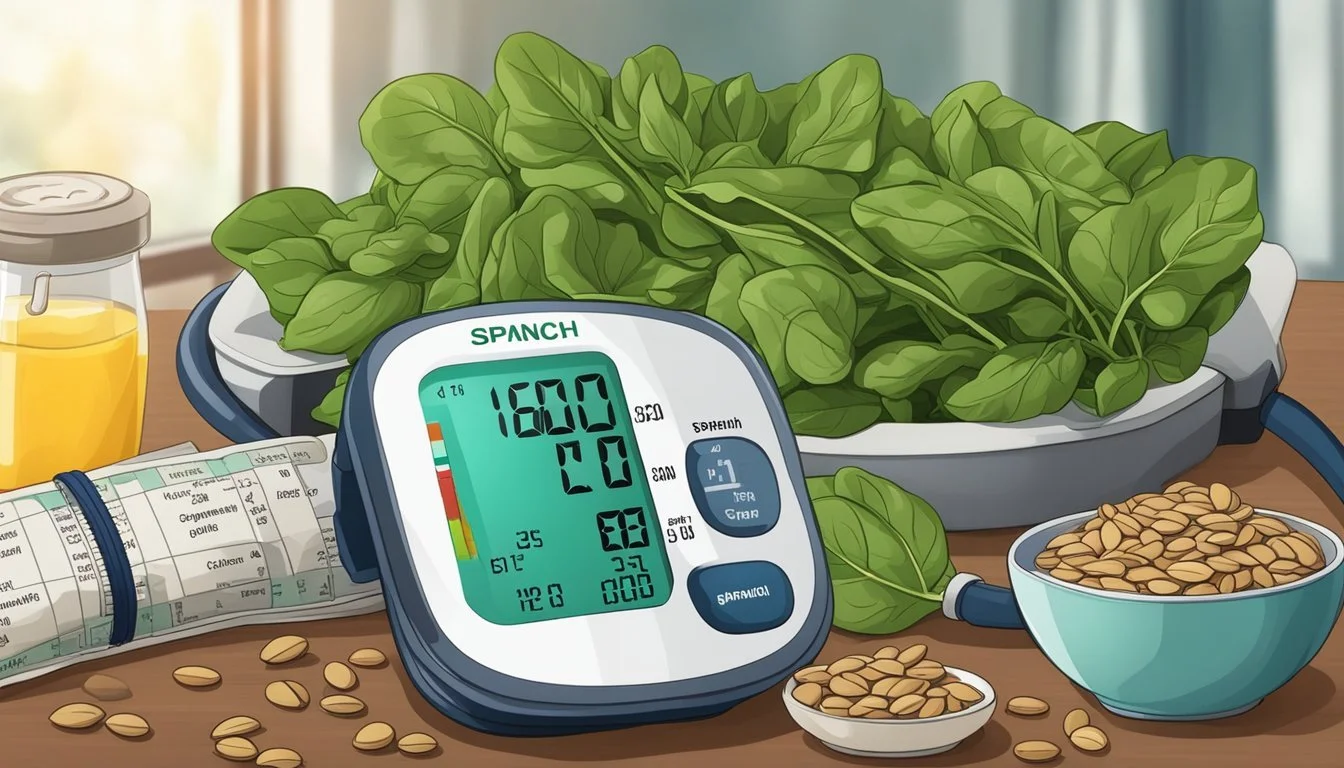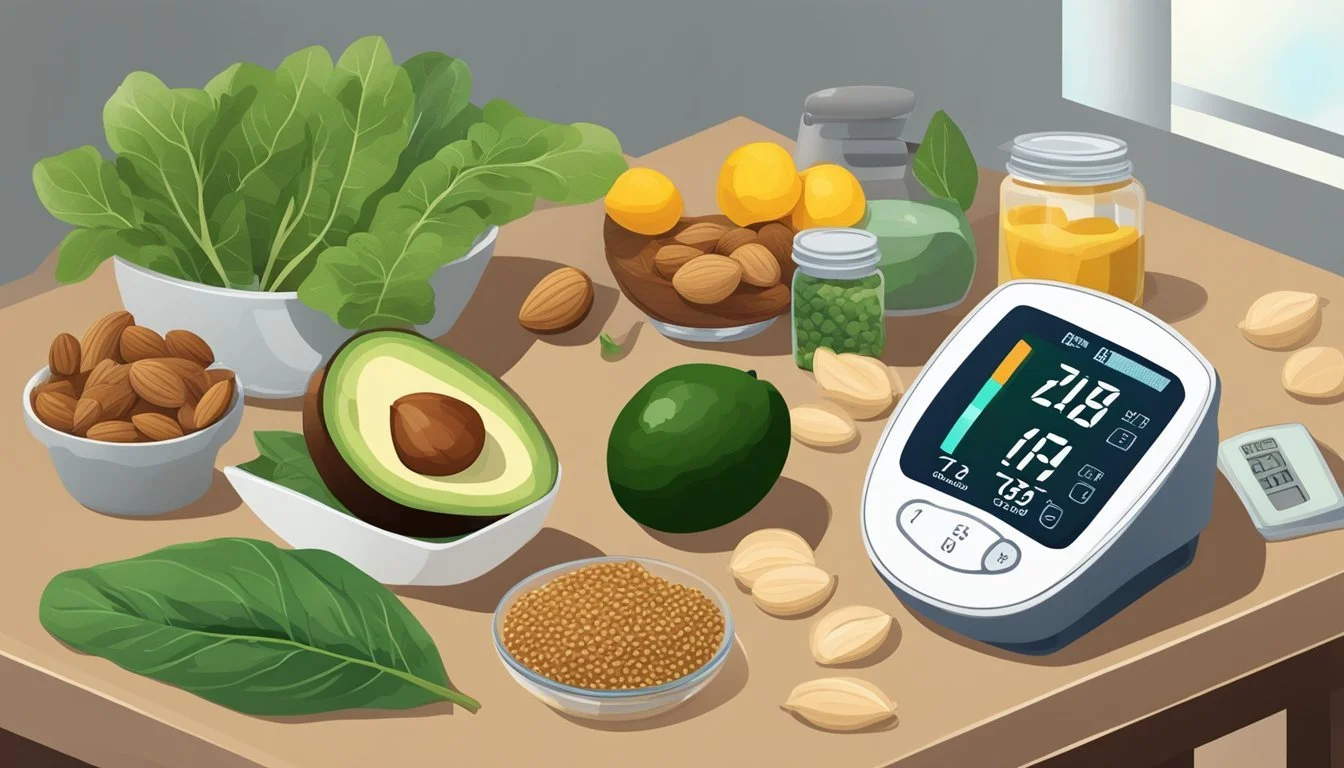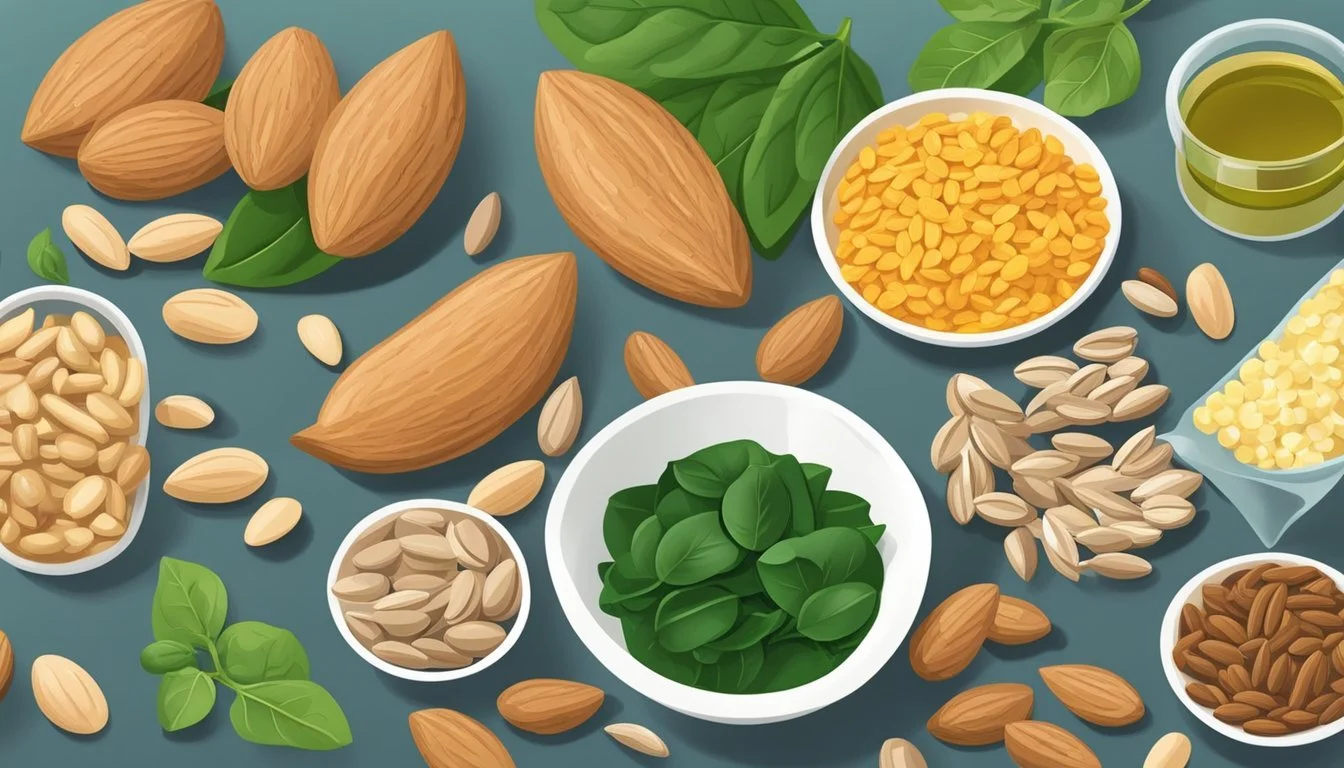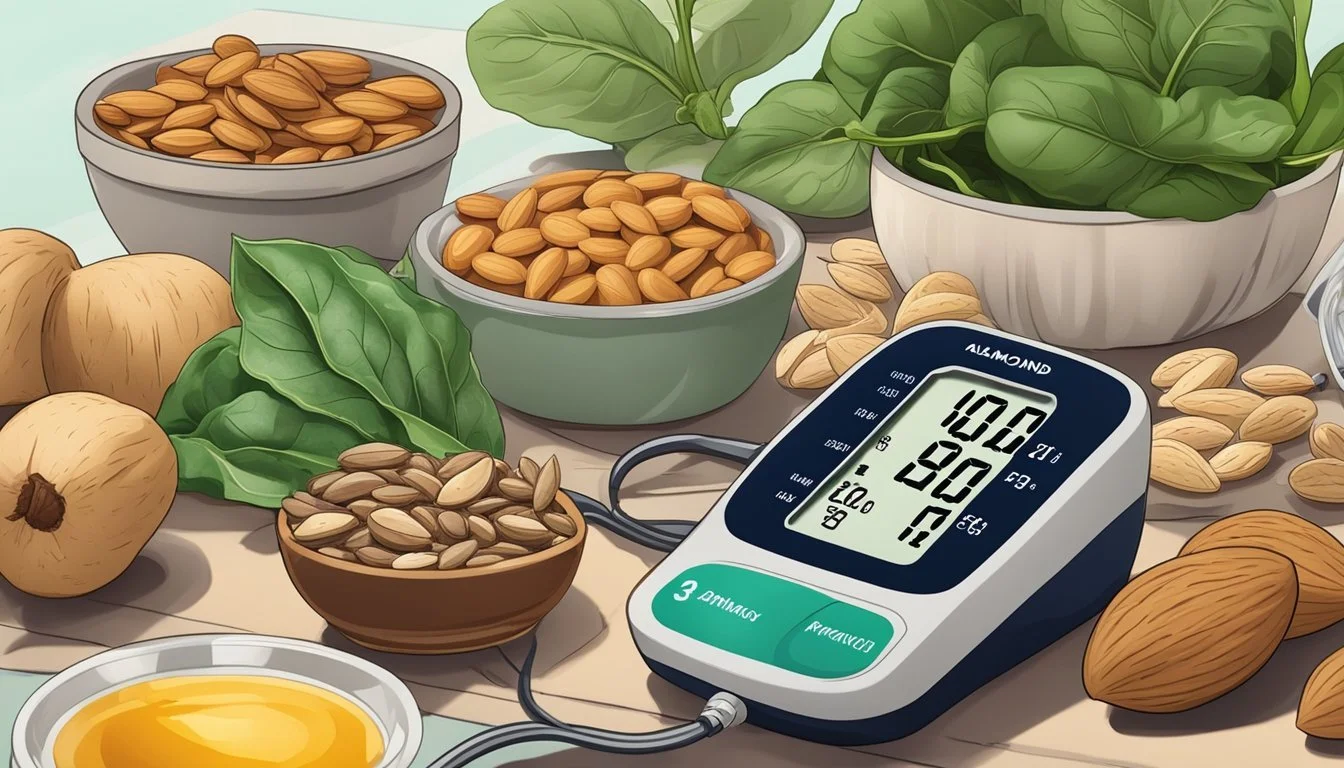What Are Some Good Sources of Vitamin E for Managing Hypertension
Essential Foods to Consider
Vitamin E has garnered attention for its potential role in managing hypertension, a condition characterized by elevated blood pressure that can lead to heart disease if left uncontrolled. As an antioxidant, vitamin E may help combat oxidative stress, a contributing factor to the development of hypertension. Research indicates that moderate supplementation of vitamin E, specifically in doses lower than 400 mg per day, may exert a protective effect on systolic blood pressure, which is the top number in a blood pressure reading and indicates the force of blood in the arteries when the heart beats.
In addition to its potential benefits for blood pressure, vitamin E is essential for a properly functioning immune system and for the prevention of chronic diseases. It is vital that individuals get enough of this nutrient through their diet to support overall cardiovascular health. Hypertension sufferers, in particular, might find dietary sources of vitamin E especially beneficial as part of a balanced approach to managing their condition.
There are a variety of foods that are not only rich in vitamin E but also supportive of heart health. Nuts and seeds, such as almonds and sunflower seeds, are known for their high vitamin E content. Leafy green vegetables also contribute to vitamin E intake, along with providing other heart-healthy nutrients like fiber. Implementing a diet that incorporates these vitamin E-rich foods, coupled with other lifestyle modifications, may be an effective strategy for individuals looking to manage high blood pressure and reduce the risk of heart disease.
Understanding Vitamin E
Vitamin E is a group of fat-soluble compounds that possess distinctive antioxidant qualities. Antioxidants are crucial in protecting the body against damage from free radicals, molecules that can harm cells, impair the immune function, and contribute to chronic conditions. Among the most active forms of Vitamin E, alpha-tocopherol is recognized for its biological significance in humans.
Furthermore, there are several other forms of Vitamin E, including gamma-tocopherol and delta-tocopherol. These differ in the number and position of methyl groups on the chromanol ring, which impacts their antioxidant function. However, for human nutrition, alpha-tocopherol is the most understood, as it has been shown to meet human requirements effectively.
Incorporating Vitamin E into the diet is relatively simple, as it can be found in:
Nuts and seeds, such as almonds and sunflower seeds
Vegetable oils, like wheat germ, sunflower, and safflower oils
Green leafy vegetables, including spinach and broccoli
It should be noted that while Vitamin E is available in supplements, obtaining it from natural food sources allows for better absorption and utilization by the body. According to research studies, an appropriate intake of Vitamin E may have a beneficial effect on blood pressure control, thereby potentially aiding in the management of hypertension. Nonetheless, excessive intake of Vitamin E, particularly from supplements, should be avoided as it could be counterproductive and lead to adverse effects.
The Role of Vitamin E in Hypertension Management
Vitamin E is recognized for its antioxidant properties, which play a significant role in protecting blood vessels from oxidative stress—a key factor in the development of hypertension. Oxidative stress refers to the damage caused by imbalances between free radicals and antioxidants in the body. By shielding the cells lining the blood vessels, vitamin E helps maintain their integrity, ensuring proper blood flow and pressure levels.
Research indicates a potential link between vitamin E and the modulation of blood pressure. It suggests that vitamin E can positively affect hypertension management, particularly when consumed in moderate doses. Specifically, doses of vitamin E lower than 400 mg/day may exert a protective effect on systolic blood pressure, the top number indicating how much pressure your blood exerts against artery walls when the heart beats.
Sources of Vitamin E:
Sunflower seeds
Almonds
Spinach
Avocado
While it is imperative to incorporate these sources into a balanced diet, one should remain cautious about the quantity, as excessive intake of supplements can have unintended consequences. Therefore, focusing on natural dietary sources is often recommended.
The relationship between Vitamin E and cardiovascular health extends to its potential in preventing heart disease. By reducing inflammation and improving endothelial function, which is the health of the blood vessels, Vitamin E may contribute to lowering the risk of heart complications associated with high blood pressure.
It is crucial for individuals to consult healthcare professionals prior to initiating any supplementation, to ensure personalized and safe dietary adjustments. As research progresses, the understanding of how antioxidants like Vitamin E can be leveraged in hypertension management continues to evolve.
Vitamin E Sources and Daily Requirements
Vitamin E is essential for maintaining overall health and may have a role in managing hypertension due to its antioxidant properties. The Recommended Dietary Allowance (RDA) for adults is 15 milligrams (mg) or approximately 22.4 international units (IU) per day.
Sources of Vitamin E:
Vegetable Oils: Some of the richest sources of vitamin E are vegetable oils such as wheat germ, sunflower, and safflower oils. These can be included in salads or used for cooking to enhance vitamin E intake.
Nuts and Seeds: Almonds, hazelnuts, and sunflower seeds are excellent sources. A handful of these can contribute significantly to the daily intake.
Vegetables: Green leafy vegetables like spinach are good sources. Incorporating them into daily meals supports nutritional intake of vitamin E.
Fruits: Certain fruits such as kiwi, mango, and avocado contain vitamin E. These can be eaten as snacks or added to meals.
Protein sources, such as seafood, also contain vitamin E, though in lesser amounts compared to vegetable oils and nuts.
To ensure adequate intake, individuals can incorporate a mix of these foods into their daily diet. Here's a quick reference table:
Food Category Sources Vegetable Oils Wheat germ oil, Sunflower oil, Safflower oil Nuts Almonds, Hazelnuts Seeds Sunflower seeds Vegetables Spinach, Broccoli Fruits Kiwi, Mango, Avocado
It's important for individuals to consult with healthcare providers for personalized advice, especially when managing conditions like hypertension, to ensure a diet that meets their specific needs without exceeding the RDA of vitamin E.
Supplements vs. Natural Sources
When managing hypertension, individuals can obtain vitamin E through supplements or natural dietary sources. Vitamin E supplements are available in various forms, such as softgels, chewables, and capsules. They can offer a high concentration of the nutrient, ensuring that one achieves their recommended daily allowance more easily. However, high doses from supplements may interact with medications, including anticoagulants, and may contraindicate certain health conditions.
Natural sources of vitamin E include vegetable oils—such as wheat germ, sunflower, and safflower oils—nuts like almonds, seeds, and green leafy vegetables. These foods provide additional nutrients that supplements lack, contributing to a well-rounded diet.
Vitamin E Sources Considerations Supplements - Precise dosage
- Possible drug interactions Food Sources - Additional nutrients
- Lower risk of overconsumption Fortified Foods - Enhanced foods with added nutrients
Fortified foods also offer a balanced way to add vitamin E to one's diet. These are foods with added vitamins and can include certain cereals and fruit juices. The safety of acquiring vitamin E from natural and fortified sources is generally high, with a lower risk of excessive intake that could potentially lead to health complications.
In conclusion, while supplements can be beneficial for specific dietary needs, natural food sources of vitamin E are generally recommended for their added health benefits and safety profile. Individuals should consult with a healthcare provider to determine the best approach for their circumstances, especially when considering supplements for managing hypertension.
Vitamin E in Preventive Health
Vitamin E, as an antioxidant, is attributed with a host of potential benefits in preventive health care. For managing hypertension, vitamin E is believed to play a role due to its effects on blood vessel health, but its direct impact on blood pressure levels needs further investigation.
In terms of cancer prevention, while some observational studies suggest a potential benefit of vitamin E in reducing the risk of certain cancers, randomized controlled trials do not consistently support this link. The relationship between vitamin E and cancer remains complex and not fully understood.
When addressing stroke, vitamin E's antioxidant properties might offer protection by reducing oxidative stress on the cardiovascular system. However, research provides mixed results regarding its efficacy in stroke prevention. Some studies have found no significant effect, while others suggest a possible benefit.
Age-related macular degeneration (AMD) and cognitive impairment are closely linked with oxidative stress. Dietary vitamin E may help slow the progression of AMD and maintain cognitive function, but supplementation is not a sole preventive measure and should be part of a balanced diet.
Concerning type 2 diabetes and coronary heart disease, there is evidence that higher dietary intake of vitamin E might be associated with a lower risk of developing these conditions. It is important to note that the outcomes may differ when considering dietary vitamin E versus supplementation.
Sources suggest consuming a diet rich in various foods, such as:
Nuts and seeds (e.g., sunflower seeds, almonds, hazelnuts)
Vegetable oils (e.g., sunflower, safflower, and wheat germ oils)
Green leafy vegetables (e.g., spinach and broccoli)
These sources not only provide vitamin E but also contribute to a healthy and balanced diet which is crucial for overall health and disease prevention.
Potential Risks of Overconsumption
When individuals consume high doses of vitamin E, particularly over an extended period, the risk of adverse health effects increases. At daily intake levels significantly above the recommended dietary allowance, vitamin E acts as an anticoagulant, potentially disrupting blood clot formation. This can lead to an increased risk of hemorrhage, especially in those taking blood-thinning medications such as warfarin.
Excessive vitamin E intake may interfere with the body’s ability to clot blood, necessitating caution and safety measures for those with clotting disorders or who are on anticoagulant therapy. Here is a brief overview of the risks:
Hemorrhagic Stroke: High levels of vitamin E can increase the chances of bleeding in the brain.
Interaction with Medications: Vitamin E can interact with medications, such as warfarin, increasing the risk of bleeding.
Surgery and Other Procedures: Prior to surgical or diagnostic procedures that have a bleeding risk, disclosing vitamin E intake is crucial.
It should be noted that while vitamin E deficiency is a concern, the likelihood of it occurring from dietary sources alone is relatively low.
Intake Source Caution Advised Supplements High-dose consumption should be monitored Dietary Rarely leads to excessive intake
Individuals should consult with a healthcare provider before starting any high-dose vitamin E supplements, particularly if they have existing health concerns related to blood clotting or are using anticoagulant medication.
Additional Health Benefits
In addition to managing hypertension, Vitamin E is renowned for its broad-spectrum benefits to various aspects of human health. Primarily, this nutrient plays a significant role in supporting the immune system. It acts as an antioxidant, protecting cells from damage by free radicals, which can bolster the body's defense mechanisms.
Further, the impact of Vitamin E on skin health is substantial. It helps protect the skin from ultraviolet light, pollution, and other elements that produce cell-damaging free radicals. These protective qualities may contribute to the prevention of premature aging and the maintenance of skin's elasticity and integrity.
The implications of Vitamin E in the context of major diseases have been the subject of much research. Studies suggest a correlation between Vitamin E and a decreased risk of certain types of cancer, though evidence is not conclusive, and benefits can vary widely based on individual factors. Notably, the nutrient has also been linked to a reduced progression of diabetes and associated complications by potentially improving endothelial function and reducing insulin resistance.
For cardiovascular health, Vitamin E's contribution extends beyond hypertension management. It is thought to potentially lower the risk of heart attack by inhibiting platelet aggregation and, thereby, atherogenesis. Furthermore, observational studies have noted an association between adequate levels of Vitamin E and the preservation of vision, protecting against cataracts and age-related macular degeneration.
Overall, the application of Vitamin E to these health concerns illustrates its multifaceted nature as a vital nutrient for human health.
Research and Studies
Vitamin E has been the subject of numerous studies examining its potential role in cardiovascular health. A systematic review scrutinized its efficacy in preventing adverse cardiovascular outcomes, noting mixed results. Certain studies in this review showcased support for vitamin E's role as an antioxidant in the prevention of lipid peroxidation, while others did not find a significant association.
Another study utilized data from the National Health and Nutrition Survey 2007 to investigate the relationship between vitamin E intake and hypertension. A higher intake of vitamin E was linked to a lower prevalence of hypertension in more than 3,500 participants.
In terms of clinical trials, a meta-analysis conducted on the effect of vitamin E supplementation on blood pressure highlighted its potential benefits. It reported a protective effect on systolic blood pressure (SBP) at doses lower than 400 mg/day and during intervention periods of ≤ 8 weeks. However, no significant effects on diastolic blood pressure (DBP) and mean arterial pressure (MAP) were observed.
The American Heart Association (AHA) and National Institutes of Health (NIH) provide guidelines and commentary on nutrients such as vitamin E but have stopped short of definitive endorsements due to variability in clinical evidence. Researchers emphasize the importance of rigorous randomized clinical trials to establish more concrete recommendations.
Study Aspect Outcome Antioxidant effects Mixed results Blood pressure Potential benefits for SBP Intervention period ≤ 8 weeks Dosage < 400 mg/day
Interactions with Other Nutrients and Medications
Vitamin E plays a role in managing hypertension, but it is important to consider its interactions with other nutrients and medications. Vitamin E interacts with several other vitamins and minerals, as well as with various drugs, which can influence its efficacy in managing hypertension.
Nutrient Interactions:
Vitamin C: Vitamin E may work synergistically with vitamin C. Together, they can help to improve endothelial function, which is beneficial for blood pressure control.
Selenium: Selenium works in conjunction with vitamin E as an antioxidant. Adequate selenium levels may help vitamin E to function effectively.
Niacin (Vitamin B3): High doses of niacin can affect the metabolism of other nutrients, including vitamin E. Caution is advised when taking them together.
Vitamin K: Vitamin E in high doses may antagonize vitamin K, which is essential for blood clotting. This becomes particularly relevant for individuals managing hypertension who are on blood-thinning medications.
Medication Interactions:
Aspirin: For those taking aspirin, it is important to be aware that high doses of vitamin E may increase the risk of bleeding.
Chemotherapy: Vitamin E might potentially interfere with the oxidative stress mechanism of certain chemotherapy drugs, hence it should be used with caution in patients undergoing treatment.
It is crucial to consult a healthcare provider before starting any supplements, especially for those with hypertension or those taking medications that could interact with vitamin E.
Safe Limits: The recommended dietary allowance of vitamin E should not be exceeded without medical advice. Over-supplementation can lead to complications, particularly when interacting with the above nutrients and medications.
Considerations for Specific Populations
When managing hypertension through diet, including good sources of vitamin E is beneficial for various specific populations; however, considerations vary based on individual needs and risk factors.
Elderly: The elderly may have a heightened need for antioxidants like vitamin E due to age-related oxidative stress. Foods rich in vitamin E, such as almonds and spinach, should be included in their diet; however, the intake should align with their overall nutritional needs and any medication interactions.
Males and Females: Both genders benefit from vitamin E to support heart health, but requirements may differ. Females, especially those who are pregnant or planning to become pregnant, should ensure adequate vitamin E intake for proper fetal development but avoid exceeding the recommended dietary allowance due to potential risks of high doses.
Pregnancy: A balance is crucial, as both deficiency and excess of vitamin E can have implications for the mother and fetus. Pregnant women should seek advice from healthcare providers to tailor vitamin E intake appropriately.
Risk Factors: Those with conditions that increase oxidative stress, such as diabetes or cancer, might need more vitamin E. Conversely, individuals with conditions like vitamin K deficiency should moderate vitamin E intake to avoid interference with blood clotting mechanisms.
Incorporating vitamin E as part of a balanced diet can be helpful for managing hypertension across different populations, always keeping in mind their unique nutritional requirements and health concerns.
Guidelines for Healthy Living
Maintaining cardiovascular health is crucial for managing hypertension. A balance of dietary guidelines and physical activity forms the cornerstone of a heart-healthy lifestyle.
Physical activity is a significant factor in controlling hypertension. Individuals are advised to engage in moderate to vigorous exercises such as brisk walking, cycling, or swimming for at least 150 minutes a week, as regular physical activity can help reduce inflammation, a contributor to cardiovascular disease.
Dietary Choices and Vitamin E Sources:
Nuts and Seeds: Almonds, hazelnuts, and sunflower seeds are rich in vitamin E and heart-healthy fats.
Vegetable Oils: Sunflower and safflower oils are among the top sources of vitamin E.
Green Leafy Vegetables: Spinach and Swiss chard contribute to vitamin E intake and provide beneficial minerals.
Dairy: Opt for low-fat options when consuming dairy products as part of a balanced diet to manage hypertension and promote liver health.
Minerals: Incorporate foods rich in potassium and magnesium, as these minerals aid in blood pressure regulation. Foods such as bananas, avocados, and dark chocolate are good sources.
Reducing Inflammation:
Eating a diet rich in antioxidants, including vitamin E, may help reduce cellular stress and inflammation.
Disease Prevention:
Dietary guidelines that support cardiovascular health may also play a role in reducing the risk of chronic conditions such as Alzheimer's Disease and liver disease. Adequate intake of vitamin E has been linked to cognitive health, although it is not a standalone preventive measure.


